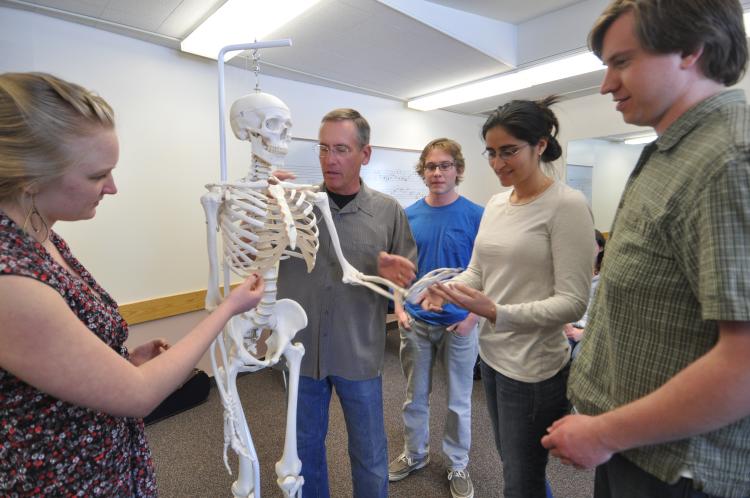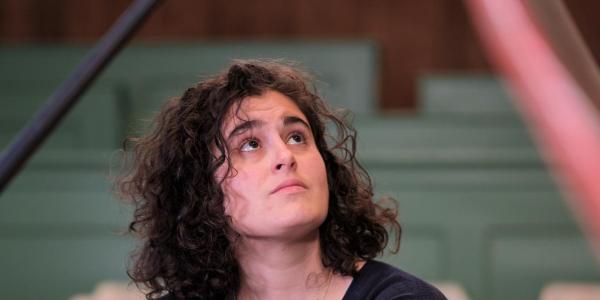
The CU Summer Alexander Technique Course and Intensive begins July 13.
How are you sitting right now? You’re probably slouched over your computer screen or slumped down, peering at your smartphone. But bad posture isn’t something you’re born with.
"You have to learn to slouch,” says College of Music Interim Associate Dean for Graduate Studies and oboe professor James Brody. “And you can learn not to. You just have to be aware of it and actively make the change.”
Some of the biggest culprits are musicians. Think about it. When was the last time you saw a woodwind or brass player sitting straight up, fully and effortlessly supporting the back and shoulders?
Playing an instrument is hard on your body. That’s why studying the Alexander Technique is so important for musicians. And it’s why Brody, through the Musicians’ Wellness Program, puts on a course every summer focused on the method.
The Alexander Technique, developed by Australian actor Frederick Matthias Alexander, is the practice of being mindful of your body’s positioning to avoid putting undue stress on yourself physically and mentally.
It’s especially popular among musicians who—often unknowingly—develop bad habits when they hold or play their instruments. But it’s a useful educational process for anyone. “It’s about the investigation and exploration of how you may be bracing or tensing in an effort to be upright - or perhaps the manner in which you move - assessing the efficacy, and then taking steps to address it," Brody says.
The Alexander Technique isn’t exercise, Brody explains, but the act of optimally using your body. “Alexander determined that overall balance can be disturbed by a misalignment of the head-neck relationship,” he says. “Once that dynamic is distressed, overall alignment is compromised.
“We need to recognize our patterns of habitual misuse and address them through conscious awareness.”
One way to do that is by imitating children. “Once they have enough muscle tone, they generally demonstrate an excellent connection to so-called Primary Control, or effortless uprightness,” says Brody.
The 21st session of the Alexander Technique Summer Program takes place over six days. Instructors introduce participants to physical and mental activities that they can take with them at the end of the course to continue practicing mindfulness and finding balance. “No matter what you do, the tools we provide can help you do it better,” says Brody.
Ed Dusinberre, member of CU-Boulder’s Takács Quartet, has been taking Alexander Technique lessons since college. “My piano teacher recommended that I explore this, commenting on my hunched over posture and the restrictions this was causing physically, and in terms of limiting my musical choices,” he says.
Dusinberre says it took him six months to feel better, both playing the violin and away from it. And he’s always working to improve. “Here in Boulder, I’ve been working regularly with James Brody for almost 10 years and continue to reap the benefits of the technique.”
Learning to rebalance your body isn’t something that happens overnight. “You have to unlearn these habits you developed as young as 3 or 4 years old,” says Brody. “It’s a commitment.”
And practitioners of the Alexander Technique say it’s well worth the hard work, especially for musicians. “To communicate emotions and musical characters is a complex process. Being more aware of both one's physical usage and mental attitude is critical to the success of the enterprise,” says Dusinberre.
“Why would we want to operate at less than optimal capacity? Why would we want to work harder than we need to in order to accomplish any task?” Brody asks. “Moving smart is just a smart move. The Alexander Technique provides a way to accomplish this.”
For more information about the Summer Alexander Technique and to register for the July 13-17 course or the July 18 one-day intensive, visit the Musicians’ Wellness Program website.




